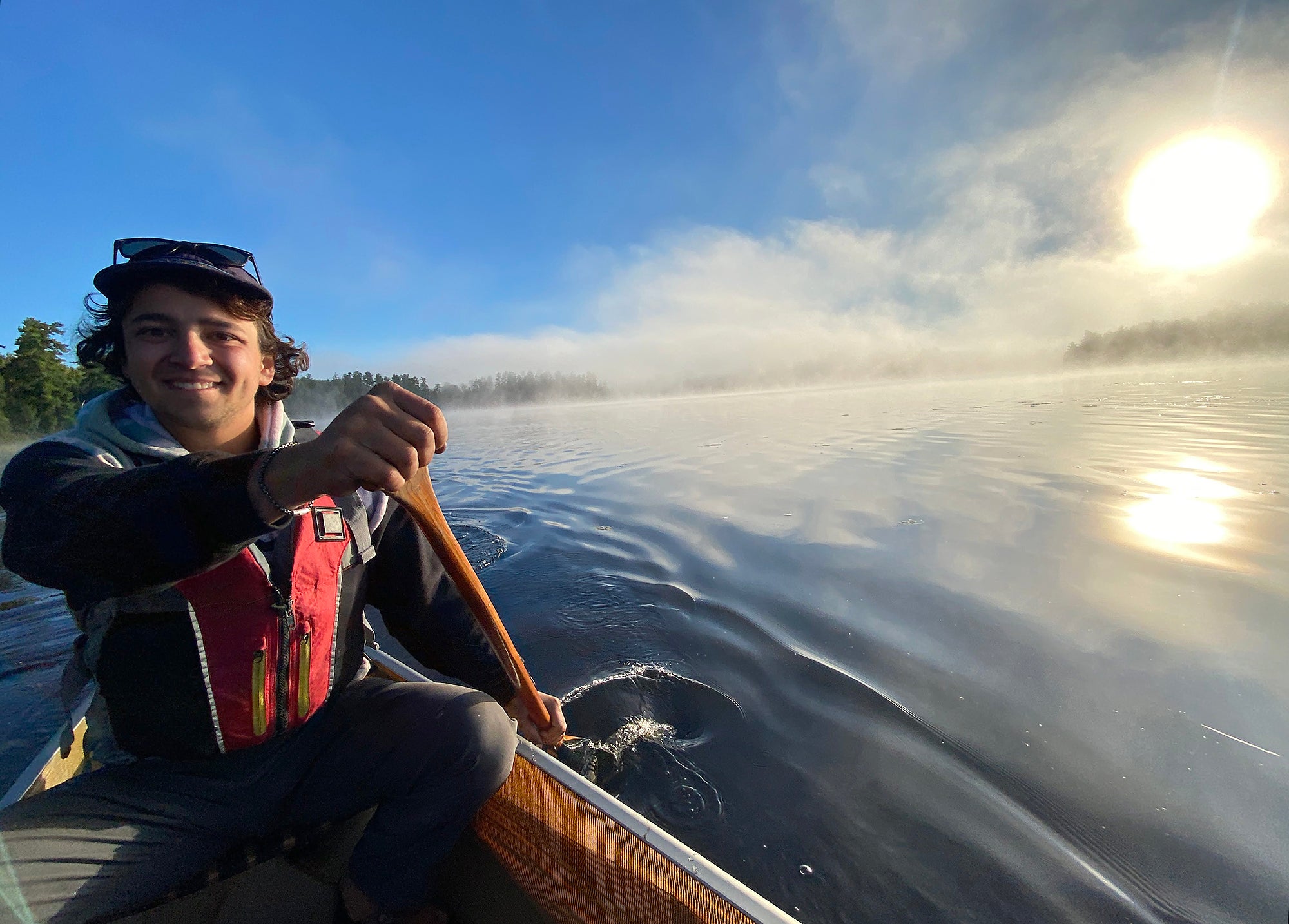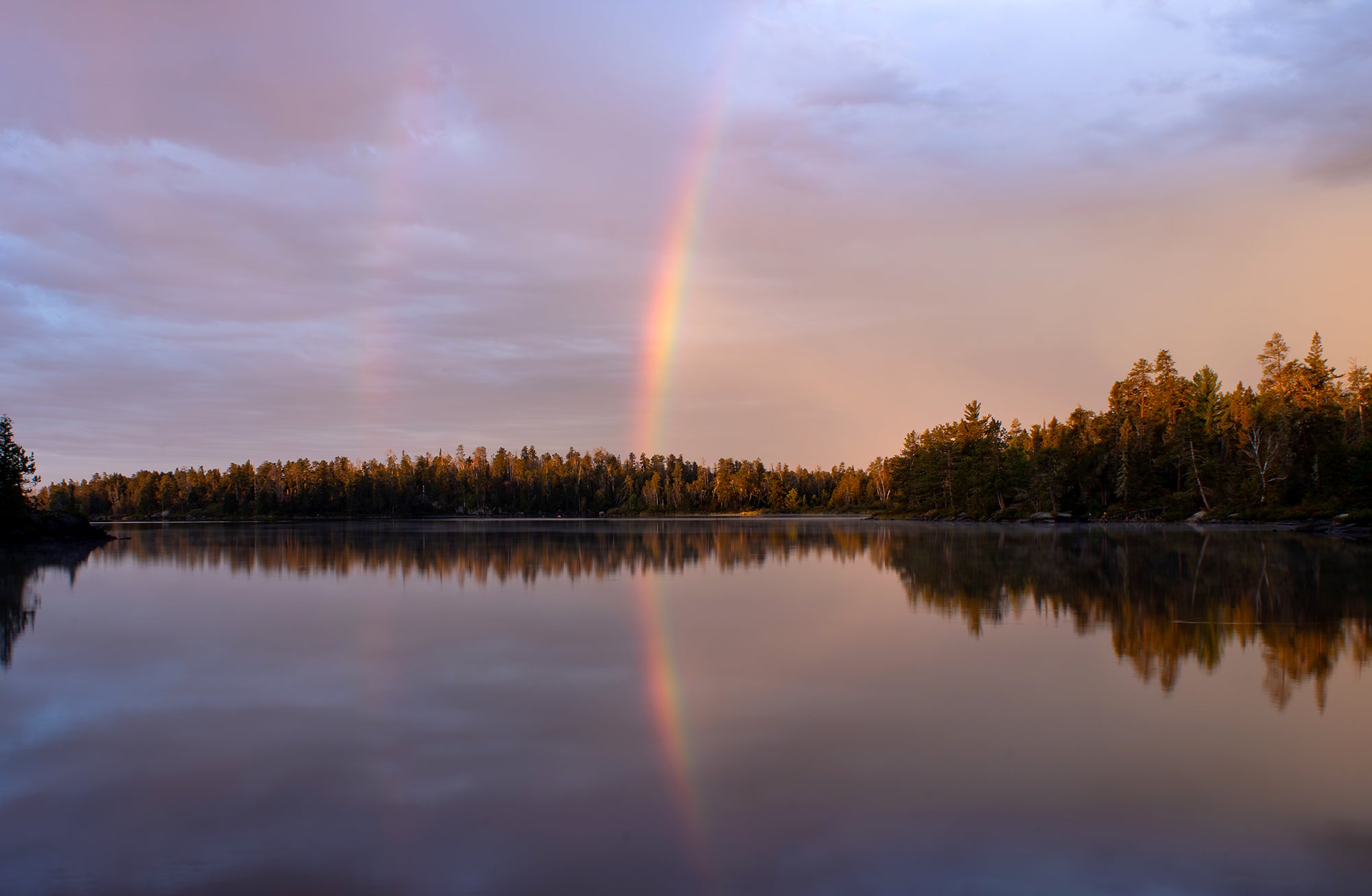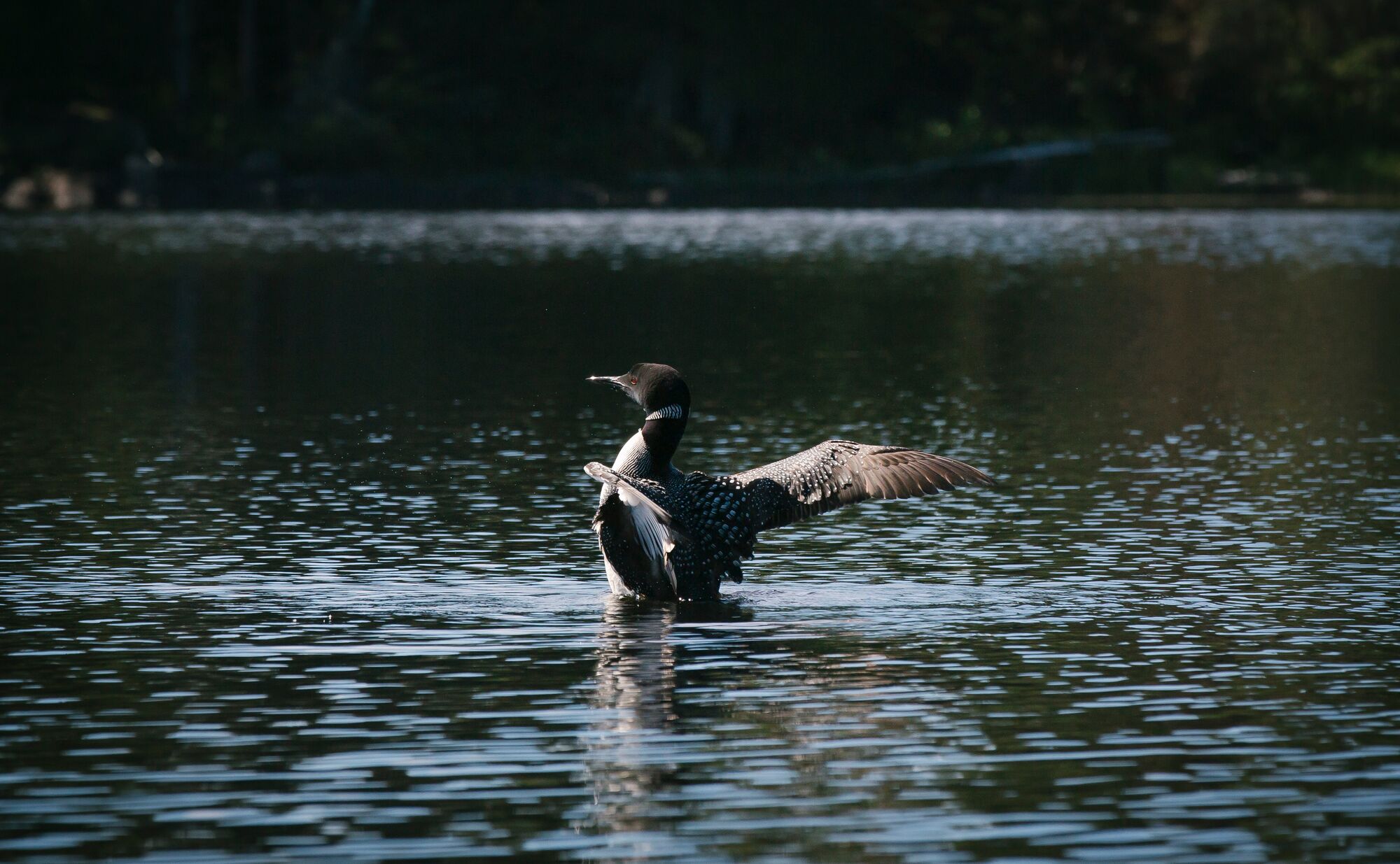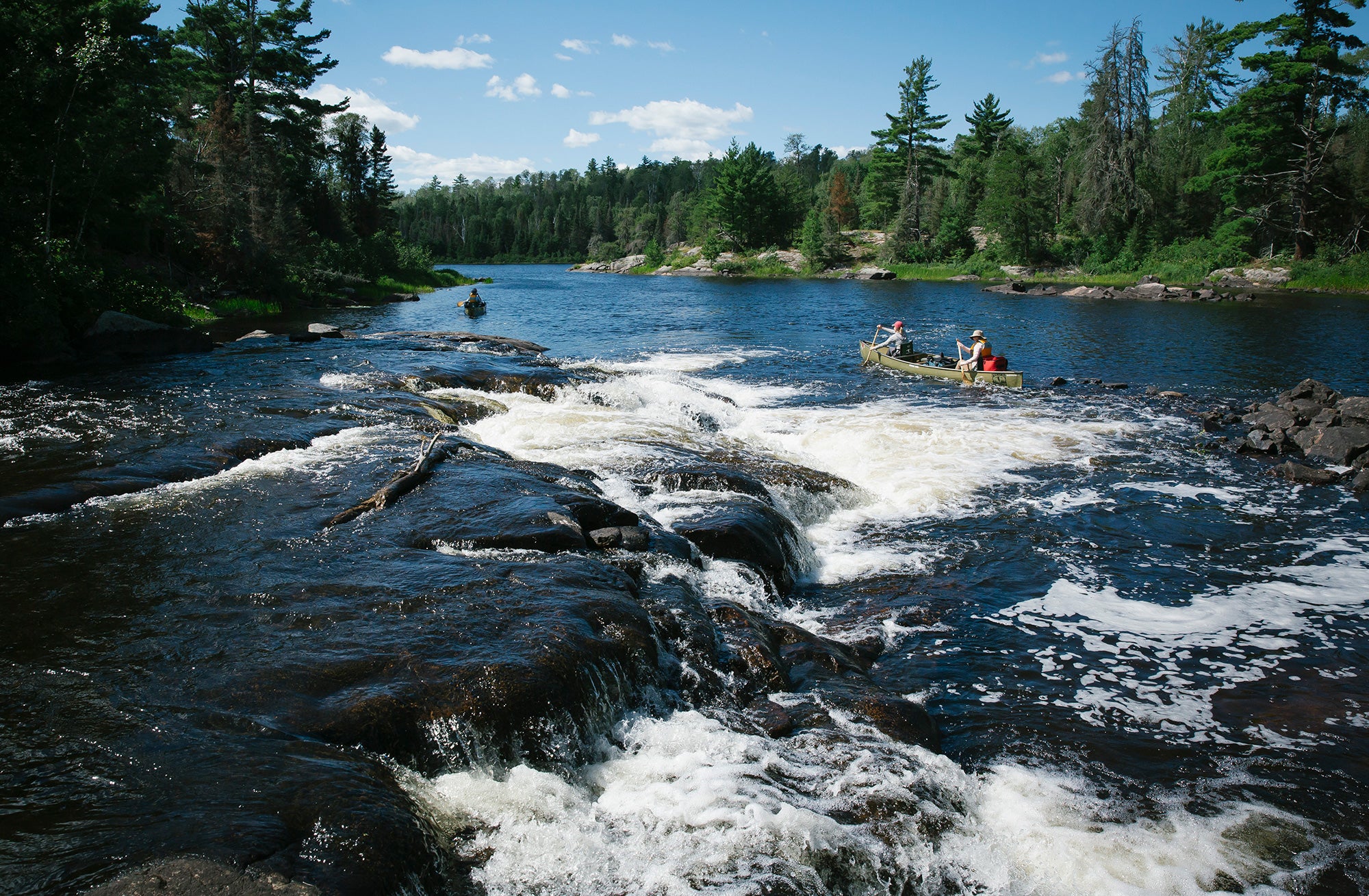The Fight to Save a Beloved Midwest Wilderness
Joseph Goldstein found healing and purpose in the Boundary Waters. Now, the Trump administration says it wants to open the wilderness area's watershed up to mining.

At six years old, Joseph Goldstein took his first family canoe trip to the Boundary Waters Canoe Area Wilderness — more than one million acres of immaculate lakes, rivers, and forests in Northeastern Minnesota. The experience left a lasting mark, later guiding him into a life of activism to defend it.
“It was amazing,” Goldstein, now an advocate for the Boundary Waters, remembers. “I was instantly in love with the wilderness. One of my clearest memories from that first trip was crying when I was told it was time to leave.”
Each year, roughly 150,000 people like Goldstein travel to this treasured wilderness ecosystem, home to hundreds of species like wolves, moose, loons, and lynx, and some of the purest waters on earth. But today the Boundary Waters are under threat. The Trump administration has said it wants to open this wilderness area’s watershed up to toxic mining as part of a broader attack on our public lands.
While these threats are grave, they are not new. Goldstein, now 24, has been helping to protect the Boundary Waters from toxic mining interests that could harm it for nearly a decade.
At 13, Goldstein began battling leukemia. While undergoing chemotherapy, and the nausea and pain that came with it, he would think back on his time in the wilderness — the challenges it presented and the lessons it taught him — for grounding and strength.
During his nearly four years of treatment, he worked with Save the Boundary Waters — a campaign working to protect the Boundary Waters from mining. During that time, he took multiple trips to Washington, D.C., lobbying members of Congress and cabinet officials. He went on to form Kids for the Boundary Waters, recruiting other kids to join the effort to protect the area.
Goldstein’s memories of summer canoe camping trips with his family, paddling and portaging from lake to lake, fishing, swimming, and exploring the vast wilderness has grounded his advocacy work.
“It’s this experience of being out there, being disconnected, being away from everyone not having contact with the outside world,” he recalls. Today, as he pursues a master’s degree in environmental studies, he believes fervently that the waters, forests, and species deserve protection.
“Wilderness is important for those who love and cherish it, and it is also important for its own sake,” says Goldstein. “It can’t protect itself. It relies on us to recognize its value and safeguard it.”
For years, Earthjustice has successfully protected the Boundary Waters on multiple fronts from dangerous and short-sighted hard rock mining. We will continue to defend it as part of our broader fight to protect public lands.
Here’s what else to know about this treasured ecosystem and the fight to defend it.

A rainbow over the Boundary Waters Canoe Area Wilderness in Northeastern Minnesota. (Photo courtesy Joseph Goldstein)
What makes the Boundary Waters Wilderness so special?
- The Boundary Waters wilderness, located in Minnesota’s Superior National Forest, is one of the most treasured wild landscapes left in North America.
- Together, the Boundary Waters and the Superior National Forest contain 20% of all the freshwater in the entire U.S. National Forest System. These waters are so pure, people often drink directly from them.
- The Boundary Waters is also the most visited wilderness in the U.S, with more than 230 miles of multiday hiking trails and 2,000 designated campsites. Each year, roughly 150,000 people travel to the Boundary Waters to canoe, dog sled, and fish.
- As a designated Dark Sky Sanctuary, the Boundary Waters offers unparalleled opportunities for stargazing, witnessing the Northern Lights, and escape from modern light pollution.
- It’s also an economic powerhouse, bringing in $1.1 billion each year in tourism dollars and creating thousands of jobs.

A loon spreads its wings in the Boundary Waters Canoe Area Wilderness. (Brad Zweerink / Earthjustice)
What risks do the Boundary Waters face?
- Trump officials at the Department of the Interior are proposing to nix a 20-year mining ban that was put in place by the Biden administration in 2023 to protect the Boundary Waters from sulfide-ore copper mining.
- The Trump administration could also reinstate the leases for the proposed Twin Metals mine, an industrial sulfide-ore mining complex that would sit immediately upstream of the Boundary Waters.
- Sulfide-ore mining is an inherently dangerous and risky type of mining because it produces sulfuric acid, which can contaminate waterways with dangerous acidic leachate, sulfate, and heavy metals that can be highly toxic to humans, plants, and animals.
- This type of mining has never been done before in Minnesota, and its waste make up the largest percentage of metal mining and processing wastes generated in the United States.

Canoeing the Boundary Waters Canoe Area Wilderness in Northern Minnesota. (Brad Zweerink / Earthjustice)
How is Earthjustice fighting to protect the Boundary Waters?
- President Trump’s latest threats to the Boundary Waters are serious, but they are not new. The Twin Metals mine proposal has been thwarted time and time again.
- We sued the Trump administration in 2018 on behalf of The Wilderness Society, Center for Biological Diversity, and the Izaak Walton League of America over its illegal reinstatement of decades-old mining leases. We sued the Trump administration again in 2020 to stop the leases’ improper renewal. Finally, in 2022, we intervened in a lawsuit filed by Twin Metals in defense of actions the Biden administration took to protect the Boundary Waters.
- In 2023, after immense public pressure, including from Earthjustice supporters, the Biden administration enacted a 20-year mining ban in the Boundary Waters headwaters by withdrawing over 200,000 acres of land from mineral leasing.
- Earthjustice will continue to defend this ban and the Boundary Waters writ large on behalf of our clients, and all people, because the Boundary Waters belongs to everyone. We can’t afford to lose it.
Earthjustice’s Midwest office works to partner with and support communities and Tribes fighting for environmental and climate justice. We also aim to protect our region’s precious places and wildlife, and build sustainable energy and climate solutions.